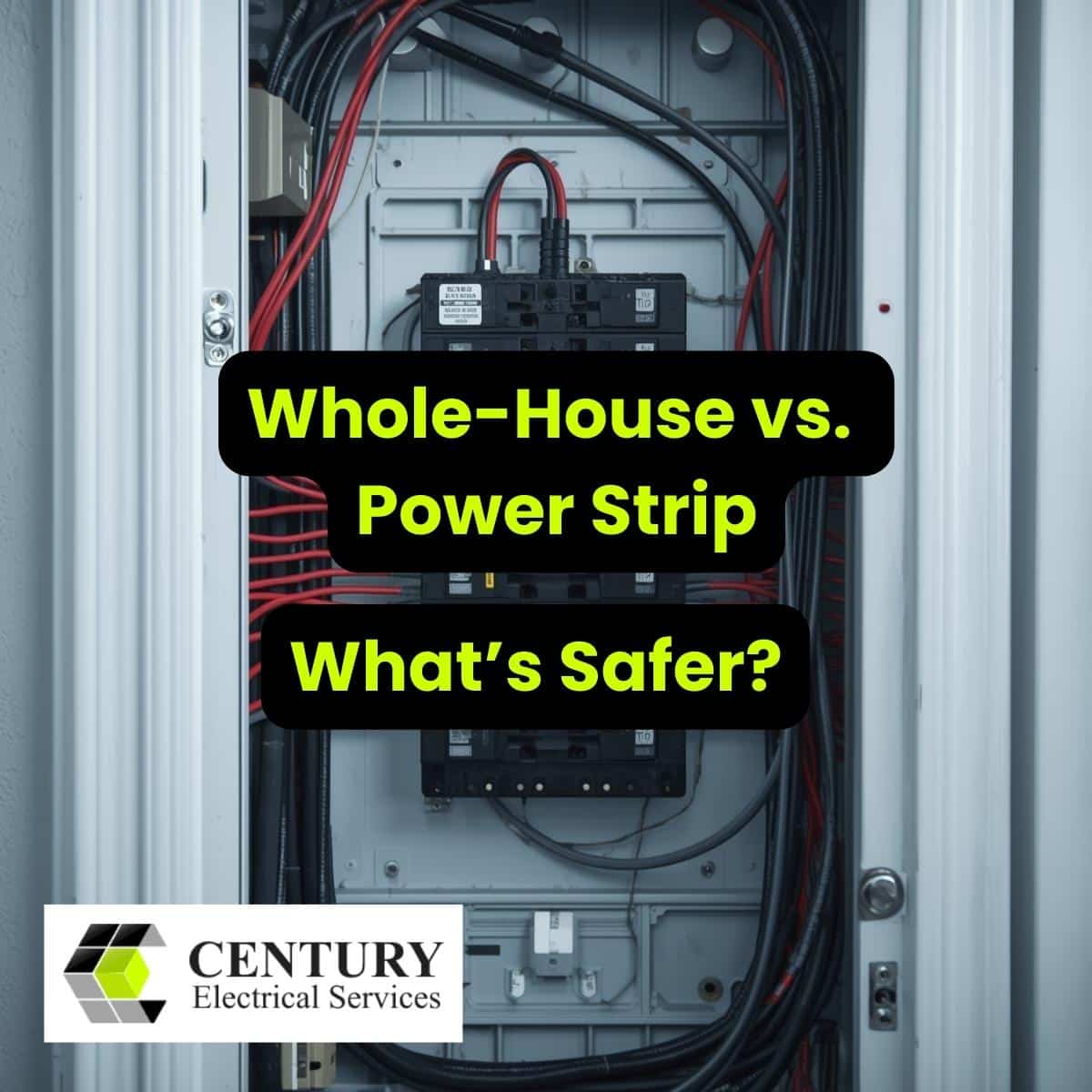
Electricity powers almost everything we use at home. From your fridge to your laptop, to your HVAC system. But one unexpected surge of power can ruin it all in seconds.
Think about it. A lightning strike. A power company switching lines. Even a large appliance cycling on and off. Any of these can send a surge rushing through your home’s wiring. And without protection? You’re left with fried electronics, expensive repair bills, and a lot of stress.
So, how do you guard your home? You’ve got two main options: point-of-use surge protection and whole-house surge protection. Let’s break them down.
What Is a Power Surge?
A power surge is a sudden spike in voltage. Your home’s wiring is designed to handle a steady flow of electricity. When that flow jumps above the safe level—even for a split second—it can overload and damage anything plugged in.
Signs of a surge can be obvious: a TV that won’t turn on, a charger that smells burnt, or a tripped breaker. Other times, the damage is slow and sneaky, slowly wearing down your appliances until one day… they just stop working.
Point-of-Use Surge Protectors
When most people hear “surge protector,” they picture a power strip under their desk. That’s point-of-use protection.
Pros:
-
Affordable and easy to find.
-
Protects whatever is plugged directly into it.
-
Great for laptops, TVs, and gaming systems.
Cons:
-
Doesn’t cover your whole home.
-
Won’t protect hardwired systems like your fridge, washer, or HVAC.
-
Quality can vary—cheap strips often don’t offer much real protection.
Point-of-use protectors are like seatbelts for individual devices. Helpful. Necessary. But not the whole solution.
Whole-House Surge Protectors
Now let’s look at the big brother of surge protection: whole-house units. These are installed directly at your home’s main electrical panel.
Pros:
-
Shields your entire electrical system.
-
Protects major appliances, HVAC, smart thermostats, and more.
-
Acts as the first line of defense, stopping big surges before they spread.
Cons:
-
Higher upfront cost than a power strip.
-
Requires professional installation.
Think of whole-house surge protection as a helmet. It protects your entire head, not just one spot.
Do You Need Both?
Short answer: Yes.
Here’s why. Whole-house surge protectors block large surges coming in from outside. But smaller, everyday surges still happen inside your home—like when your air conditioner kicks on. That’s where point-of-use protectors help.
Together, they form a layered defense. A helmet and knee pads. A double safety net.
When Should You Consider Whole-House Surge Protection?
Here are some signs it’s time:
-
You own expensive electronics or appliances.
-
Your area is prone to storms and outages.
-
You work from home and can’t afford to lose computers or servers.
-
You’ve invested in smart home technology or an EV charger.
If any of these sound familiar, whole-house surge protection isn’t a luxury. It’s a must.
Cost vs. Value
Yes, installing a whole-house surge protector costs more than buying a few power strips. But think about the flip side.
Replacing a fried air conditioner? Thousands of dollars.
Losing a home office setup? Hundreds, if not more.
The peace of mind of knowing everything is safe? Priceless.
It’s one of those upgrades that pays for itself the first time it saves you from disaster.
Final Thoughts
Point-of-use surge protectors are great. Whole-house surge protection is better. And together? They give you the strongest defense against one of the most unpredictable threats to your home.
Don’t wait until after the damage is done. Protect your home, your family, and your wallet.
👉 Ready to install a whole-house surge protector? Contact Century Electrical Services today. Our licensed electricians can set you up with the protection your home deserves.







